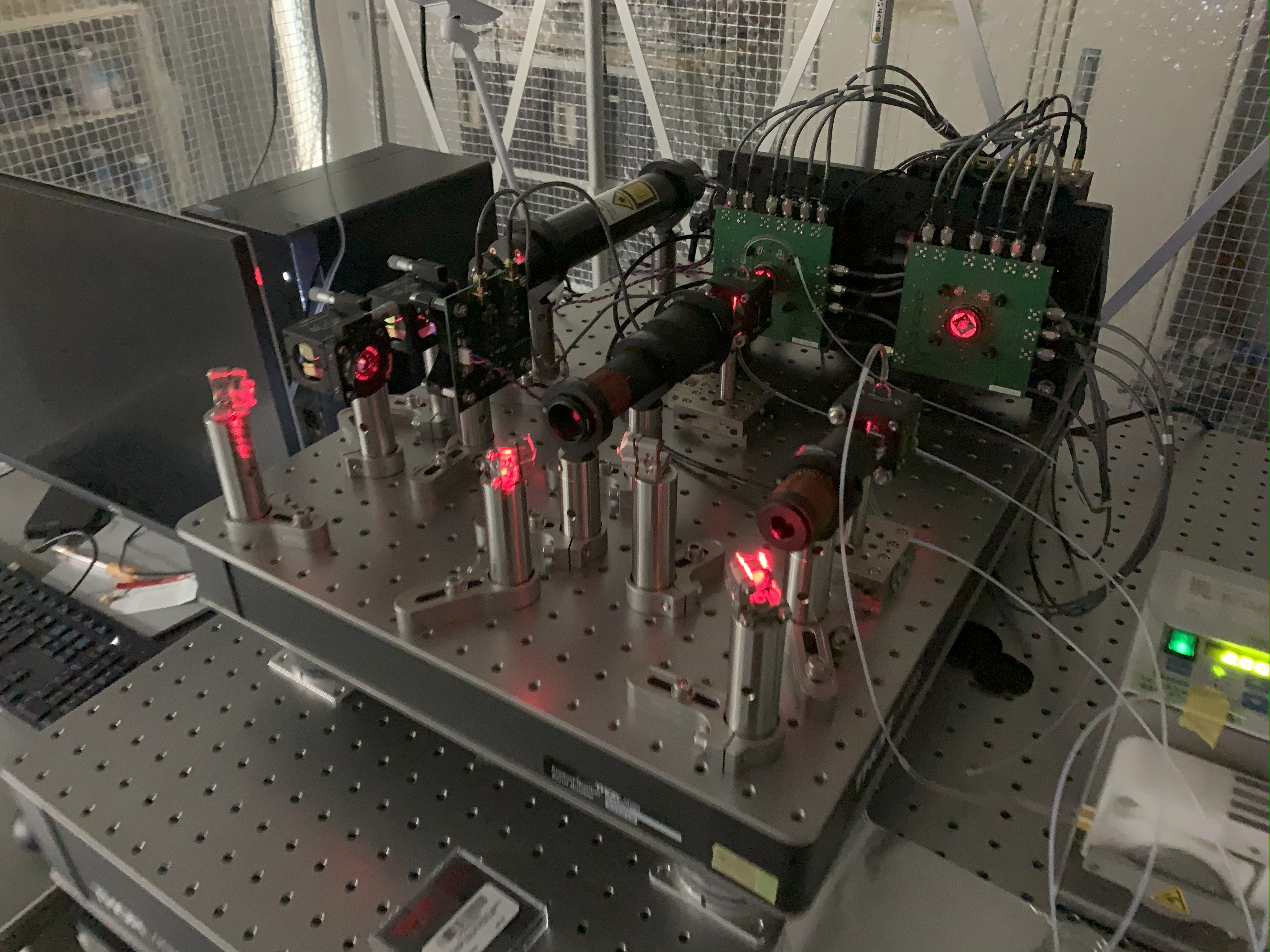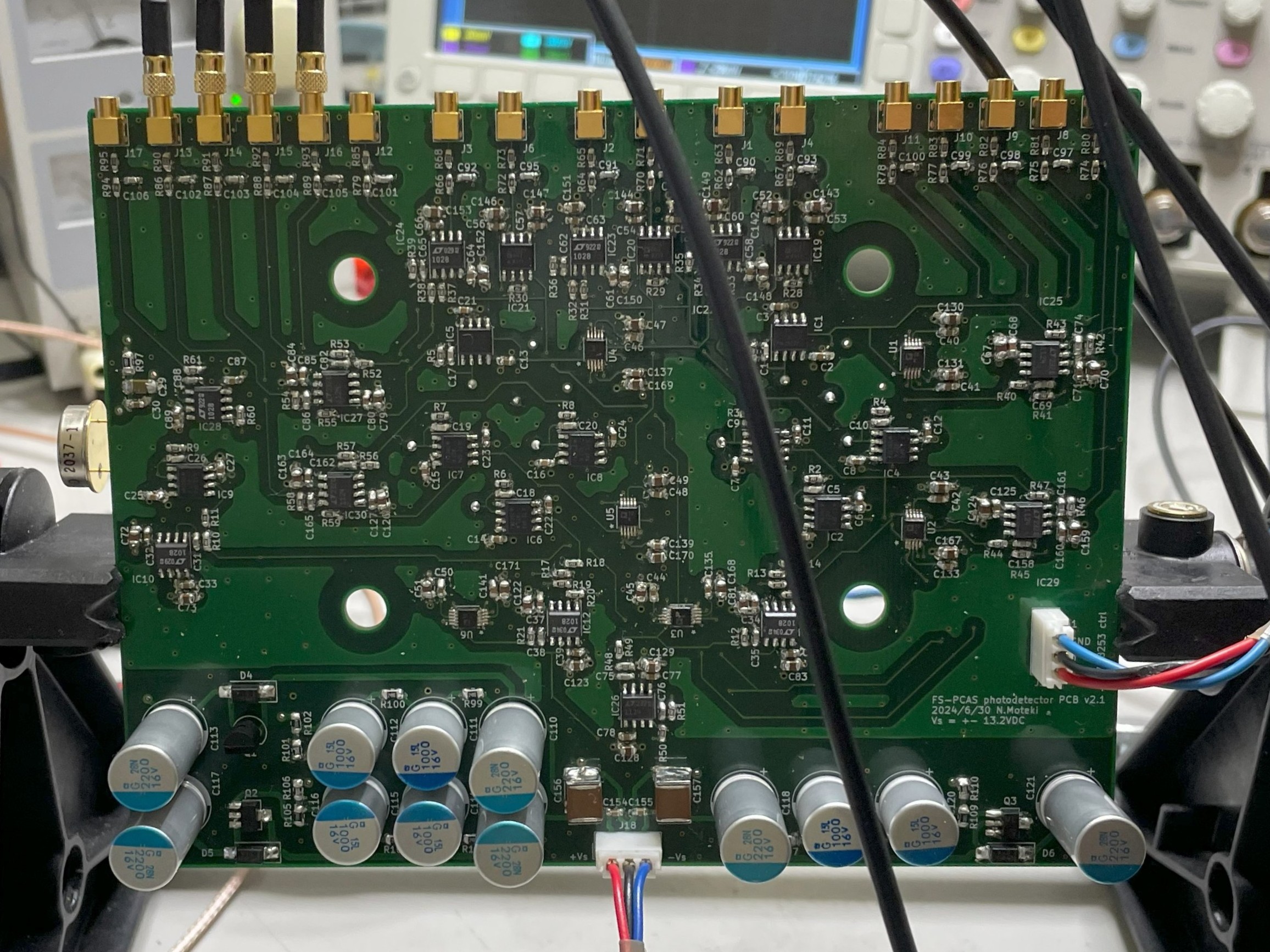The atmosphere-ocean system contains diverse particulate matter including mineral particles from deserts, sea salt particles from ocean surfaces, carbonaceous particles from forest fires, anthropogenic particles from fossil fuel combustion, biological particles (marine microorganisms), and fragmented microplastic particles. Quantitative understanding of their physicochemical properties, dynamics, and spatiotemporal distributions requires in-situ observations and sampling measurements. Selection of observation methods involves balancing data quality/quantity with analytical efficiency, necessitating optimization or development of methods tailored to research objectives.
We are developing the Complex Amplitude Sensing (CAS) method as a novel, versatile particle analysis technique that combines portability for mobile platforms (ships/aircraft) with laboratory analysis capabilities (Photo 1). CAS measures the amplitude and phase of scattered waves (complex scattering amplitude S = ReS + iImS) from individual particles dispersed in a medium. Comparing obtained single-particle two-dimensional data (ReS, ImS) with theoretically calculated scattering amplitudes enables particle type discrimination and size distribution determination1. Recently, we successfully developed an improved system (CAS-v2) capable of simultaneous measurement of complex scattering amplitudes in two orthogonal polarization components, achieving high-precision measurements in both gas and liquid media2. We have developed all hardware components and software from scratch (Photo 2).
Understanding particulate matter dynamics in the atmosphere, hydrosphere, and cryosphere, along with quantitative assessment of inter-sphere transport, is fundamentally important for understanding and predicting environmental issues (climate effects of mineral aerosols, nanoplastic pollution). However, observation methods for each sphere have evolved independently, making direct comparison between datasets based on different definitions challenging. Addressing this, we are developing, optimizing, and validating CAS as a next-generation universal analytical method capable of obtaining consistent particle observation data independent of medium (seawater/freshwater/air). Alongside fundamental research, we are conducting performance verification using environmental samples through collaborative research, including atmospheric aerosol analysis3,4, marine suspended particle analysis5, and solid particle analysis in polar ice cores.

Photo 1. CAS instrument for liquid-borne particle analysis (photographed June 10, 2021).

Photo 2. CAS-v2 photodetection circuit under construction and testing (photographed August 6, 2024).
References
- Moteki, N., Measuring the complex forward-scattering amplitude of single particles by self-reference interferometry: CAS-v1 protocol, Opt. Express, 29(13), 20688–20714, 2021. https://doi.org/10.1364/OE.423175.
- Moteki, N., and Adachi, K., Measuring the polarized complex forward-scattering amplitudes of single particles in unbounded fluid flow: CAS-v2 protocol, Opt. Express, 32(21), 36500–36522, 2024. https://doi.org/10.1364/OE.533776.
- Ohata, S., Moteki, N., Kawanago, H., Tobo, Y., Adachi, K., and Mochida, M., Evaluation of a method to quantify the number concentrations of submicron water-insoluble aerosol particles based on filter sampling and complex forward-scattering amplitude measurements, Aerosol Sci. Technol., 57(10), 1013–1030, 2023. https://doi.org/10.1080/02786826.2023.2223387.
- Ohata, S., Moteki, N., Adachi, K., Tobo, Y., Matsui, H., Kita, K., Mori, T., and Koike, M. (2025). Aircraft‐based observation of mineral dust particles over the western North Pacific in summer using a complex amplitude sensor, J. Geophys. Res. Atmos., 130(5), e2024JD043063, 2025. https://doi.org/10.1029/2024JD043063.
- Yoshida, A., Tobo, Y., Adachi, K., Moteki, N., Kawai, Y., Sasaoka, K., and Koike, M., Analysis of oceanic suspended particulate matter in the western North Pacific using the complex amplitude sensor, Sci. Rep., 14(1), 20055, 2024. https://doi.org/10.1038/s41598-024-70683-1.